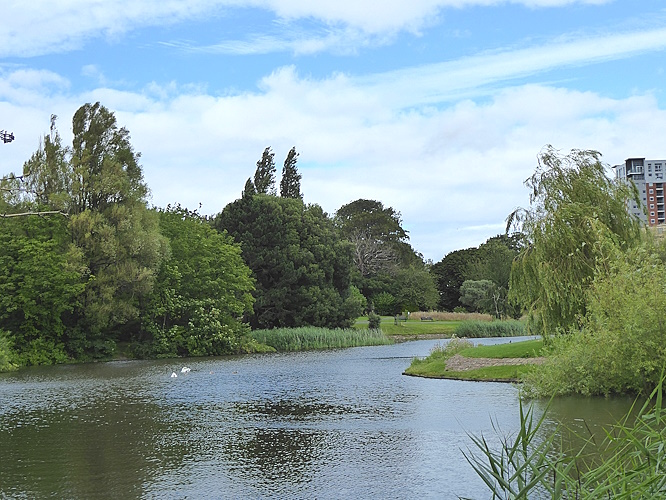
At the southern end of the park, the shrubberies have been cut back hard, which allowed the inner shrubs to show off. There were masses of ripening blackberries, just a few hazel nuts forming (although one appeared to have been gnawed by something), sloes and a lavish display of luminous red Guelder Rose berries.
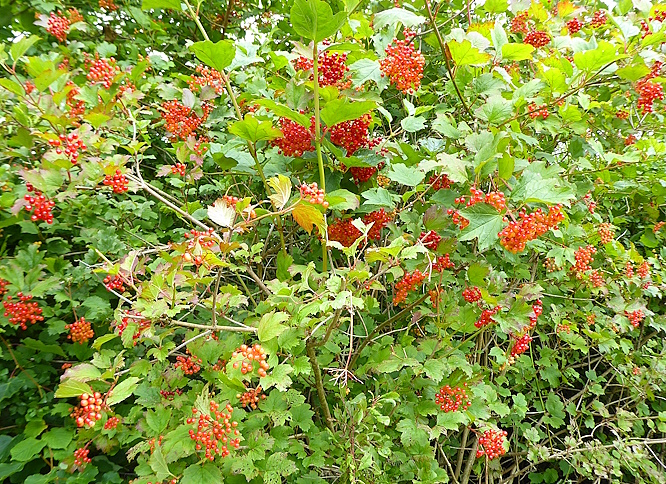
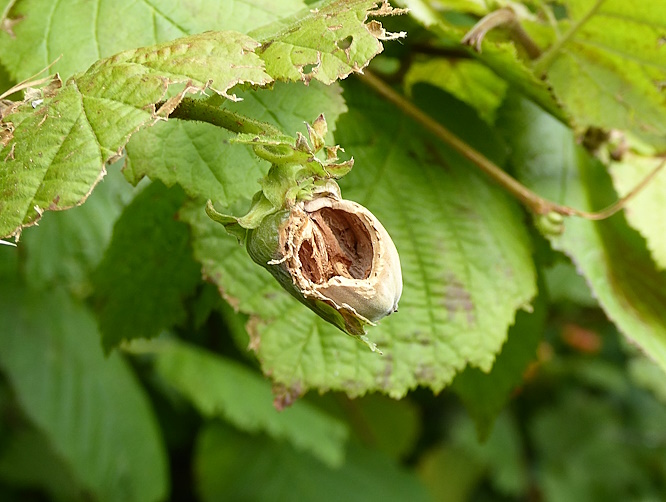
Wildflower patches were scattered around, at this season showing mostly white Wild Carrot and yellow Ragwort. It’s been many years since we saw Ragwort infested with the yellow and black caterpillars of the Cinnabar Moth. But there were plenty of bees and other insects on it, and during the day we saw several butterflies, mostly as single individuals – Common Blue, Speckled Wood, one of the Whites and a Gatekeeper. A couple of weeks ago we saw an oak tree at Waterloo heavily infested with Knopper Galls, and there was one here too, with hardly an acorn untouched. The tree also had a few artichoke galls, caused by a different parasitic wasp which attacks a different part – the buds in the leaf axils, not the developing acorns.
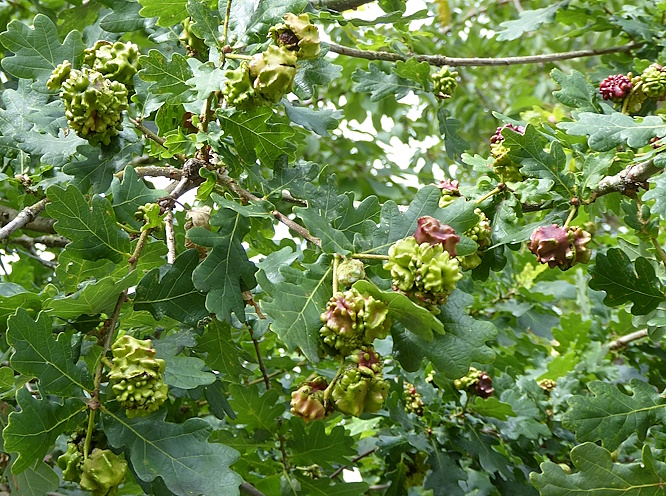
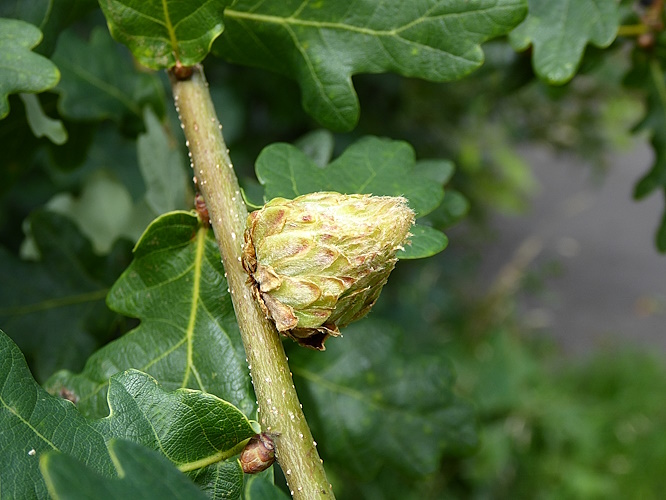
Near the west end of the lake a young woman was communing with nature by feeding the pigeons. A gull was hovering nearby, wondering if he could join in without being noticed.

We were met by our friend Katy an MNA member also now the Chair of the Friends of Princes Park. Many of their recent tree plantings have posts with QR codes which link to the tree’s name and description on their website. We looked for the young Foxglove tree, but it had died after developing a severe list. However, a couple of feet away from the cut stump sprouts are coming from the roots, and the namepost and cage have been moved to protect it.
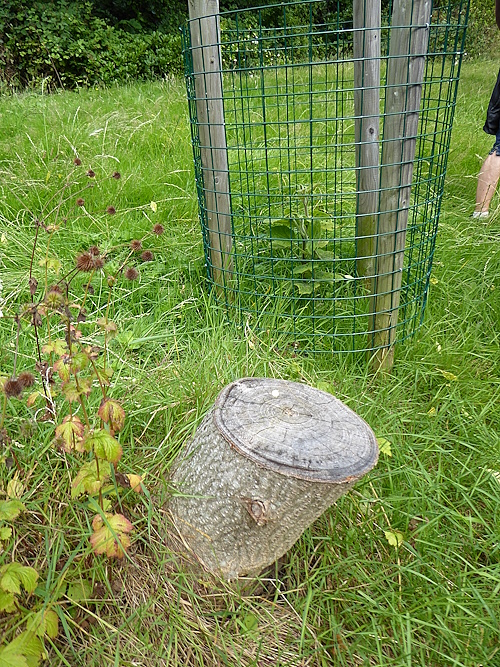
Tree 315 is Toona sinensis, the Chinese Mahogany, Tree 316 is Cercis canadensis, an Eastern Redbud. It is called a Judas tree on their website, but it isn’t. All three of these trees are near to the magnificent tall hedge of Chinese Privet, up on the western bank of the lake, just coming into bloom.
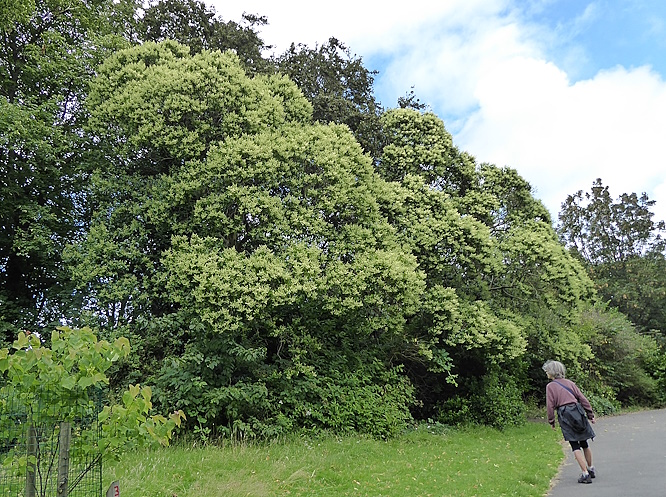
A interesting new planting is a Chinese Tulip Tree Liriodendron chinense. It was planted last November by the Duke of Devonshire as a link to Princes Park’s designer Joseph Paxton, who was head gardener at the Duke’s seat at Chatsworth. Paxton designed both Princes Park and Birkenhead Park, which had their 180th and 175th anniversaries in 2022. Matching Chinese Tulip Trees have been planted in both parks, and also at Chatsworth, with special railings and commemorative stone ground markers.
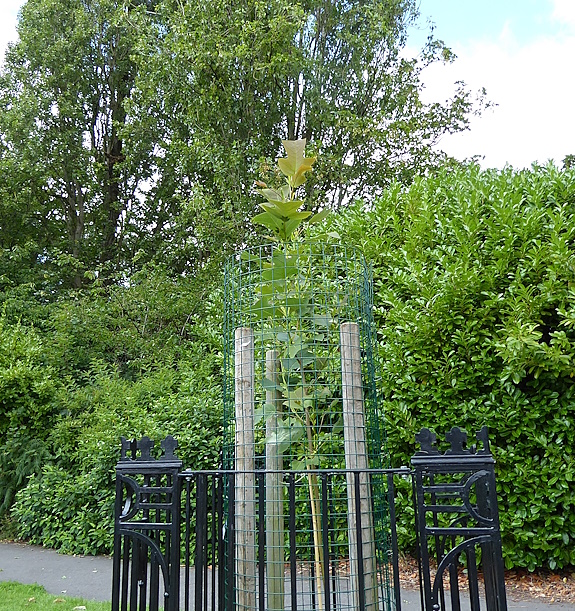
Katy was keen to show us a pair of special newish trees. They are numbers 206 and 209 Eucryphia x nymansensis. The park calls them Leatherwood trees, but that is the name of one parent of this hybrid. They should be called Nyman’s Eucryphia, after the National Trust house and garden in Sussex, which was the source of the hybrid. When they were first planted, they seemed ordinary enough, but they have just burst out into white flowers all over, like Roses or Hellebores.
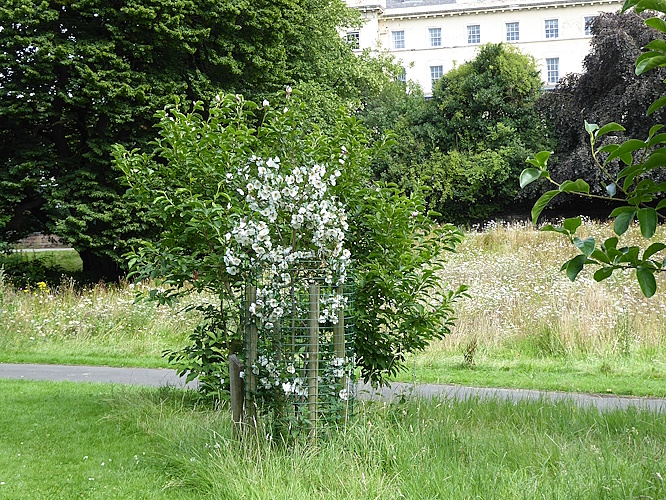
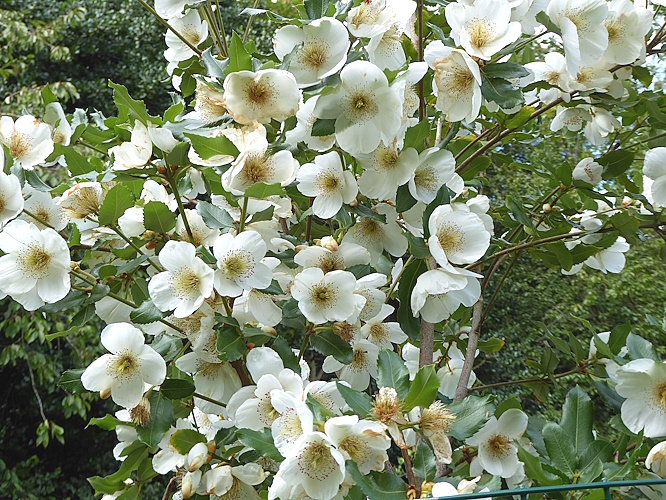

As we walked back to look at the lake, we peeked into all the tree cages as we passed them, and were rewarded by finding this one, number 215. It’s a young Golden Rain tree, the one we searched for so assiduously in Calderstones a few years ago. Good to know there is another one. The park’s website uses its alternate name, Pride of India, but it is actually a Chinese tree, so is mis-named.
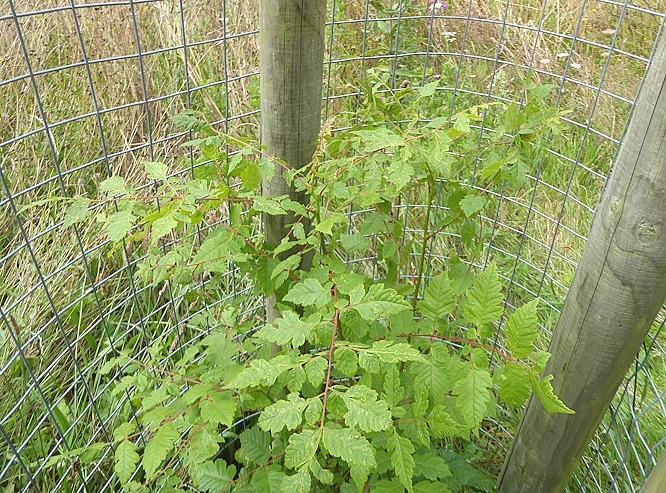
We ended the walk with a stroll along the open side of the lake. Mute Swans had three cygnets. There were about a dozen Canada Geese and nesting Moorhens. A Little Grebe was followed by a single cute chick, paddling furiously to catch up with her, and a family of Coots had three noisy chicks.
Public transport details: Bus 82 from Elliot Street at 10.12, arriving Aigburth Road / Ullet Road at 10.25. Returned from Park Road / Gredington Street on the 82A and 1.42, arriving Liverpool ONE bus station 1.55.
